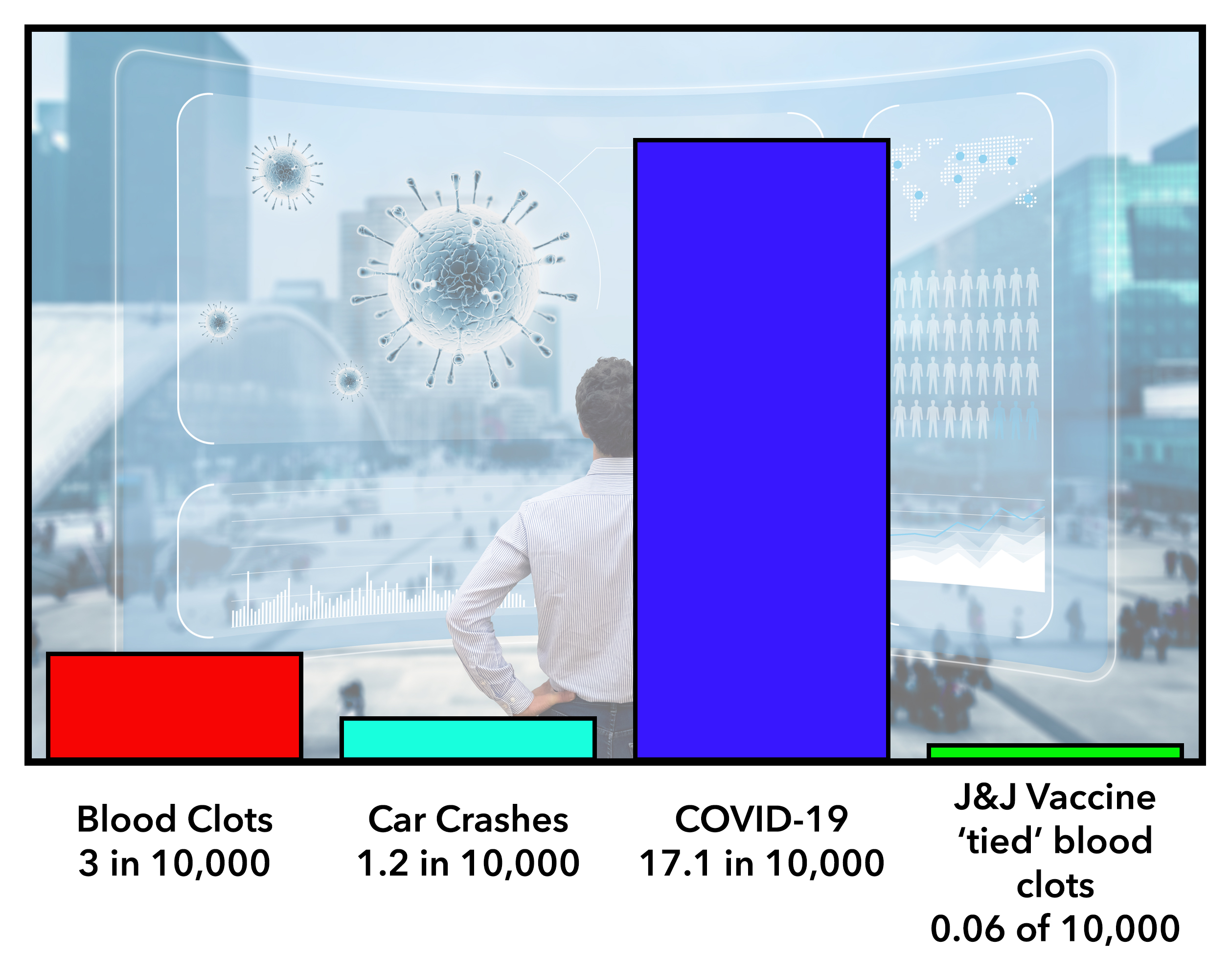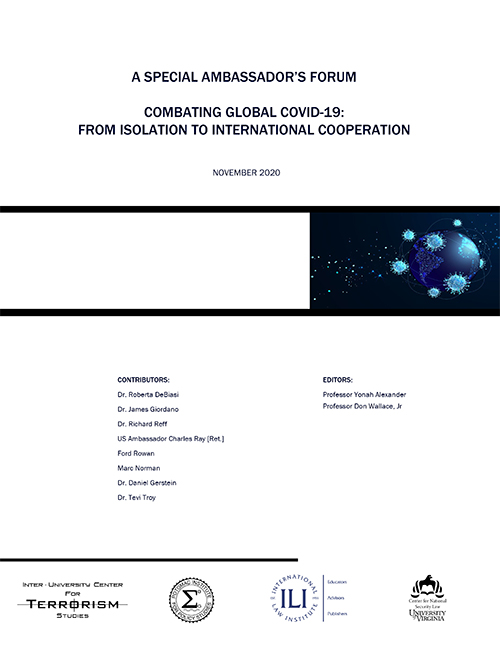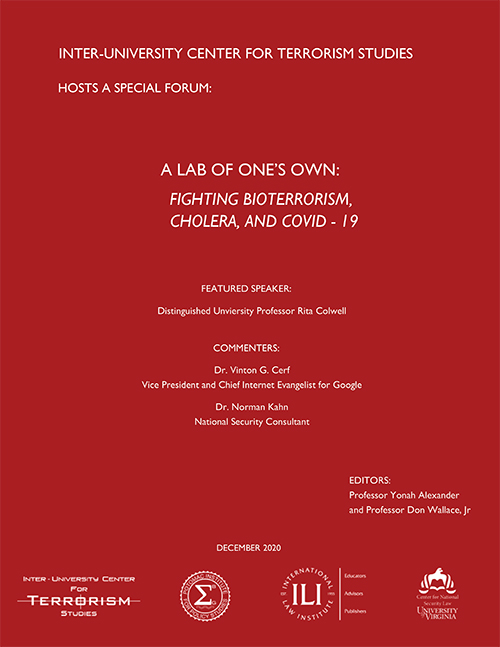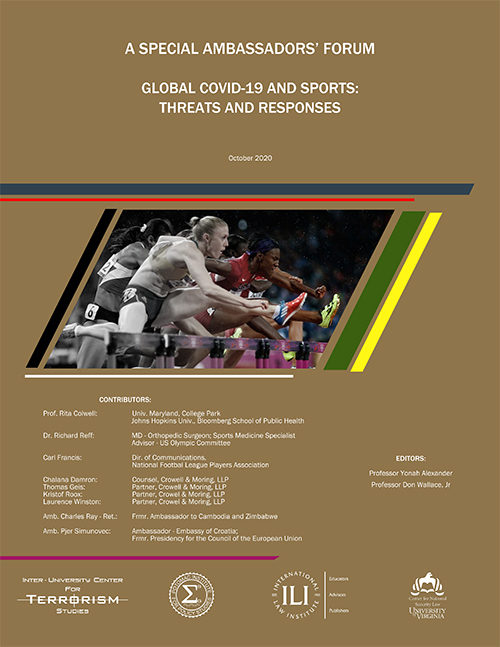Featured

Ingenuity Takes Off, Making Space History
By Gabrielle Meyers, Potomac Institute Communications Intern
On Monday, April 19, Ingenuity became the first aircraft in history to make a controlled flight on another planet.
 Ingenuity arrived on Mars attached to Perseverance on February 18 and was deployed on April 3. Ingenuity’s mission was to conduct flight tests on Mars, so it was deployed to the surface of Jezero Crater, which was chosen for its flatness and lack of obstructions. Ingenuity’s flight occurred on the 16th day of its 30-day mission, after which Perseverance will begin to explore the Jezero Crater.
Ingenuity arrived on Mars attached to Perseverance on February 18 and was deployed on April 3. Ingenuity’s mission was to conduct flight tests on Mars, so it was deployed to the surface of Jezero Crater, which was chosen for its flatness and lack of obstructions. Ingenuity’s flight occurred on the 16th day of its 30-day mission, after which Perseverance will begin to explore the Jezero Crater.
Ingenuity has since taken off two more times, on April 22 and April 25. Both flights reached an altitude of 16 feet and took pictures while in the air, which can be viewed on NASA’s website. During the second flight, Ingenuity stayed in the air longer than the first and moved sideways for the first time. The flight control system even tilted five degrees, allowing some of the thrust from the counter-rotating rotors to accelerate the craft sideways for seven feet.
During the third flight, Ingenuity reached the same maximum altitude but featured more sideways movement. Having moved 164 feet at speeds reaching 6.6 feet per second, Ingenuity was briefly out of the camera’s range for some of the third flight.
There were many concerns with the first flight, such as Mars’s lower gravity and thin atmosphere. The pressure at the surface of Mars is only 1% that of Earth, meaning that there relatively few air molecules for the helicopter’s blades to interact with in order to take off. Thus, the team behind Ingenuity took extra precautions to increase Ingenuity’s chance for success by choosing an optimal location and scheduling the flight for what they determined to be optimal time based on energy and flight conditions.
Ingenuity became airborne at 3:34 am EDT. The helicopter rose to a predetermined altitude of 10 feet and maintained that height for 30 seconds. Overall, it spent 39.1 seconds in the air. The flight was conducted autonomously, through algorithms that controlled the guidance, navigation, and control systems. After the flight, the data was sent to the team on Earth through satellites and NASA’s Deep Space Network. Because of this, the flight could not be observed from Earth in real time.
“Ingenuity is the latest in a long and storied tradition of NASA projects achieving a space exploration goal once thought impossible,” said acting NASA Administrator Steve Jurczyk. “We don’t know exactly where Ingenuity will lead us, but today’s results indicate the sky – at least on Mars – may not be the limit.”
The Ingenuity team’s next steps are to prepare for Ingenuity’s fourth flight, which will occur in a few days.

I'd rather take my chances: Why pausing J&J's vaccine is a bad idea.
 With the pause on the delivery of the Johnson & Johnson vaccine, we have not only deprived some of the most at-risk individuals of protection against COVID-19, but we have also irreversibly diminished the value of the vaccines in the eyes of the public. The jab will come back but the damage has been done to the image of all vaccines.
With the pause on the delivery of the Johnson & Johnson vaccine, we have not only deprived some of the most at-risk individuals of protection against COVID-19, but we have also irreversibly diminished the value of the vaccines in the eyes of the public. The jab will come back but the damage has been done to the image of all vaccines.
A huge spotlight has been placed on 6 women who had blood clots in recent days, 1 of whom tragically died. These women happen to be 6 of 7,000,000 people who have received the Johnson & Johnson vaccine. Drawing a non-causal connection, the CDC has called for a pause on the use of the Johnson & Johnson vaccine.
Blood clots affects up to 100,000 individuals a year, an incidence rate of about 3.0 in 10,000 for women1 (with the toll slightly higher for men).2 Compare that with the Johnson & Johnson vaccine “tied” blood clotting issue in women between the ages of 18 – 48 where the values of this “increased incidence” is 0.06 in 10,000 women 18-48 who received the vaccine. Never mind that car accidents have a death toll of 1.2 in 10,0003 or that women whom use birth control take the risk of increased blood clot with the incidence rate of about 1 in 3004, COVID-19 itself has killed 17.1 in 10,000 Americans5. We are comparing a 0.06 and a 17.1 rate.
With COVID-19 being the biggest public health crisis of our time, we are desperately in need of as many vaccinations as possible. Pausing or throwing away a time dependent supply of a life saving measure is not only inadvisable, it is a misinformed and dangerous act.
So, if given the opportunity to receive the Johnson & Johnson vaccine, I’ll take my chances.
· From female scientists, everywhere

PROFESSOR YONAH ALEXANDER AND PROFESSOR DON WALLACE, JR., EDITORS
 The national, regional, and global spectrum of biological challenges is limitless. Throughout recorded history, these infinite safety concerns stem essentially from two inevitable sources of enduring actual and potential dangers to individuals, communities, societies, and civilizations.
The national, regional, and global spectrum of biological challenges is limitless. Throughout recorded history, these infinite safety concerns stem essentially from two inevitable sources of enduring actual and potential dangers to individuals, communities, societies, and civilizations.
The first critical threat is caused by Mother Nature’s disasters, such as earthquakes, cyclones, and infectious diseases. The second concern is man-made menaces, including violent radicalism, terrorism, and war. The key question then is whether the United States and the International Community are prepared to identify, prevent, and counter current and future biological threats.
The Preface of our current Report on “Combating Global COVID-19: From Isolation to International Cooperation” (November 2020) offers an overview of the nature and global implications of biological challenges, both natural and man made, as well as provides a brief academic perspective of the editors of this timely publication.
Read the full report here

PROFESSOR YONAH ALEXANDER AND PROFESSOR DON WALLACE, JR.
EDITORS
 The national, regional, and global spectrum of biological challenges is limitless. Throughout recorded history, these safety concerns stem essentially from two inevitable sources of enduring actual and potential dangers to individuals, communities, societies, and civilizations.
The national, regional, and global spectrum of biological challenges is limitless. Throughout recorded history, these safety concerns stem essentially from two inevitable sources of enduring actual and potential dangers to individuals, communities, societies, and civilizations.
The first critical threat is caused by Mother Nature’s disasters, such as earthquakes, cyclones, and infectious diseases. The second concern is man-made menaces, including violent radicalism, terrorism, and war. The key question is whether the United States and the International Community are
prepared to identify, prevent, and counter current and future biological threats.
This Preface of the current report on “A Lab of One’s Own: Fighting Bioterrorism, Cholera, and COVID-19” (December 2020) offers an overview of the national and global implications of biological challenges, both natural and man-made, as well as providing a brief academic perspective.
To read the report click here

PROFESSOR YONAH ALEXANDER AND PROFESSOR DON WALLACE, JR., EDITORS
 The national, regional, and global spectrum of biological challenges is limitless. Throughout recorded history, these infinite safety concerns stem essentially from two inevitable sources of enduring actual and potential dangers to individuals, communities, societies, and civilizations.
The national, regional, and global spectrum of biological challenges is limitless. Throughout recorded history, these infinite safety concerns stem essentially from two inevitable sources of enduring actual and potential dangers to individuals, communities, societies, and civilizations.
The first critical threat is caused by Mother Nature’s disasters, such as earthquakes, cyclones, and infectious diseases. The second concern are man-made menaces, including violent radicalism, terrorism, and war. The key question then is whether the United States and the International Community are prepared to identify, prevent, and counter current and future biological threats.
In this connection our current academic and professional effort is publishing a Report on “Global COVID-19 and Sports: Threats and Responses” that consists of contributions by invited interdisciplinary panelists at our recent Ambassadors’ Forum on “Global Covid-19 and Sports: Threats and Responses” that was held on July 30, 2020, via Zoom conferencing and hosted by the International Law Institute (ILI) and the Inter-University Center for Terrorism Studies (IUCTS). Speakers at this Ambassadors’ Forum included Distinguished University Professor Rita Colwell (University of Maryland College Park and Johns Hopkins University. Bloomberg School of Public Health); Dr. Richard B. Reff, MD (Orthopedic Surgeon and Sports Medicine Specialist); Carl Francis (Director of Communication at the National Football League Players Association); Chalana Damron, Tom Gies, Kristof Roox (attorneys at Crowell & Moring); Ambassador (Ret.) Charles Ray (a former U.S. diplomat and military officer); and Ambassador Pjer Simunovic at the Embassy of Croatia (holding the Presidency of the Council of the European Union). Subsequently, Laurence Winston, an attorney also at Crowell & Moring contributed to the current Report as well.
It should also be noted that in view of the significant role of law in planning for the security, health, business, and sports world in the shadow of the continuing coronavirus pandemic, we decided, with the approval of Crowell & Moring, to also publish a Monograph on “Global Covid-19 and Sports: Exposure Claims and Liability Mitigation Considerations”. The authors of this publication were the attorneys from Crowell Moring LLP, namely, Chalana Damron, Thomas P. Gies, Kristof Roox, and Laurence Winston. The abbreviated version of the Monograph is incorporated in the current, slightly edited and updated, Report.
This Preface provides a brief academic context from the perspectives of the Editors of this publication as well as relevant Acknowledgements.
To read the full report click here
